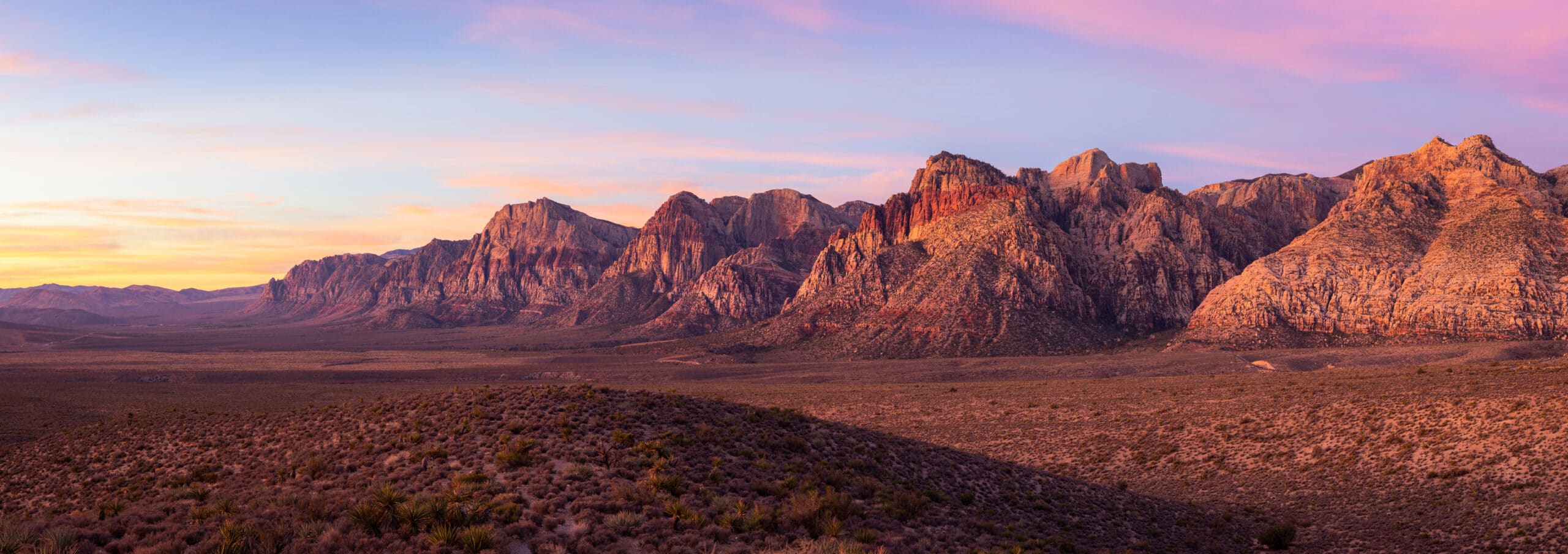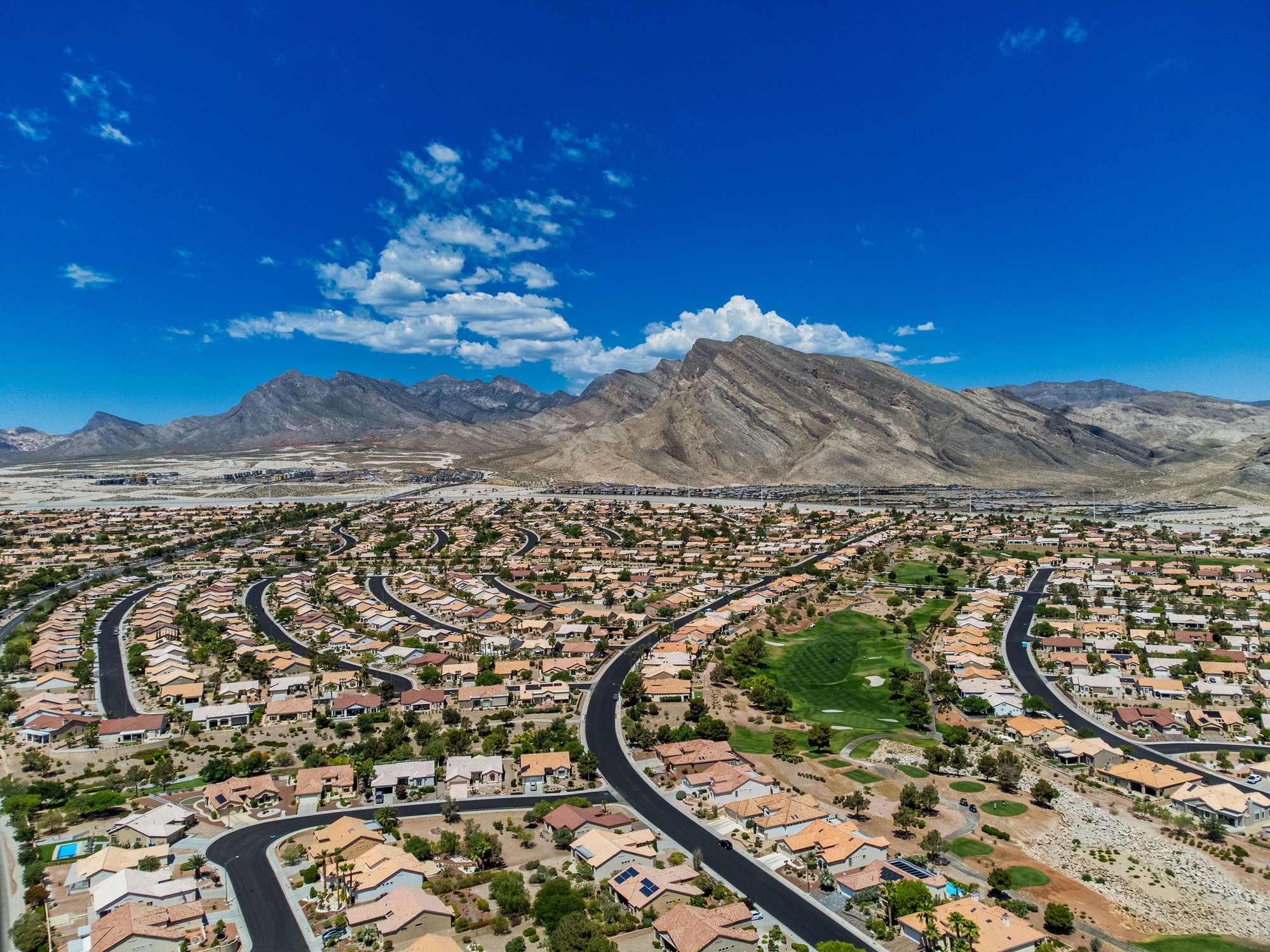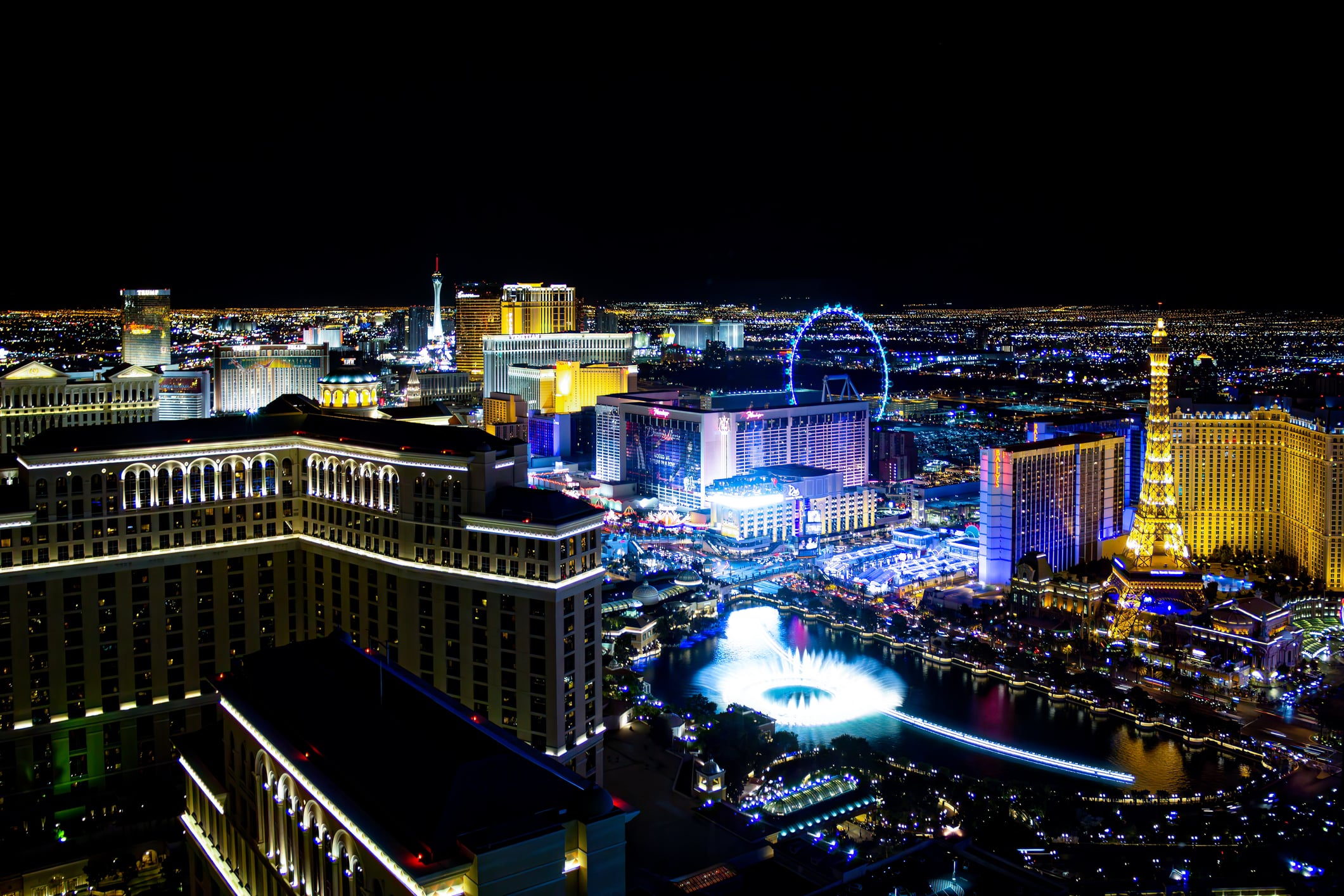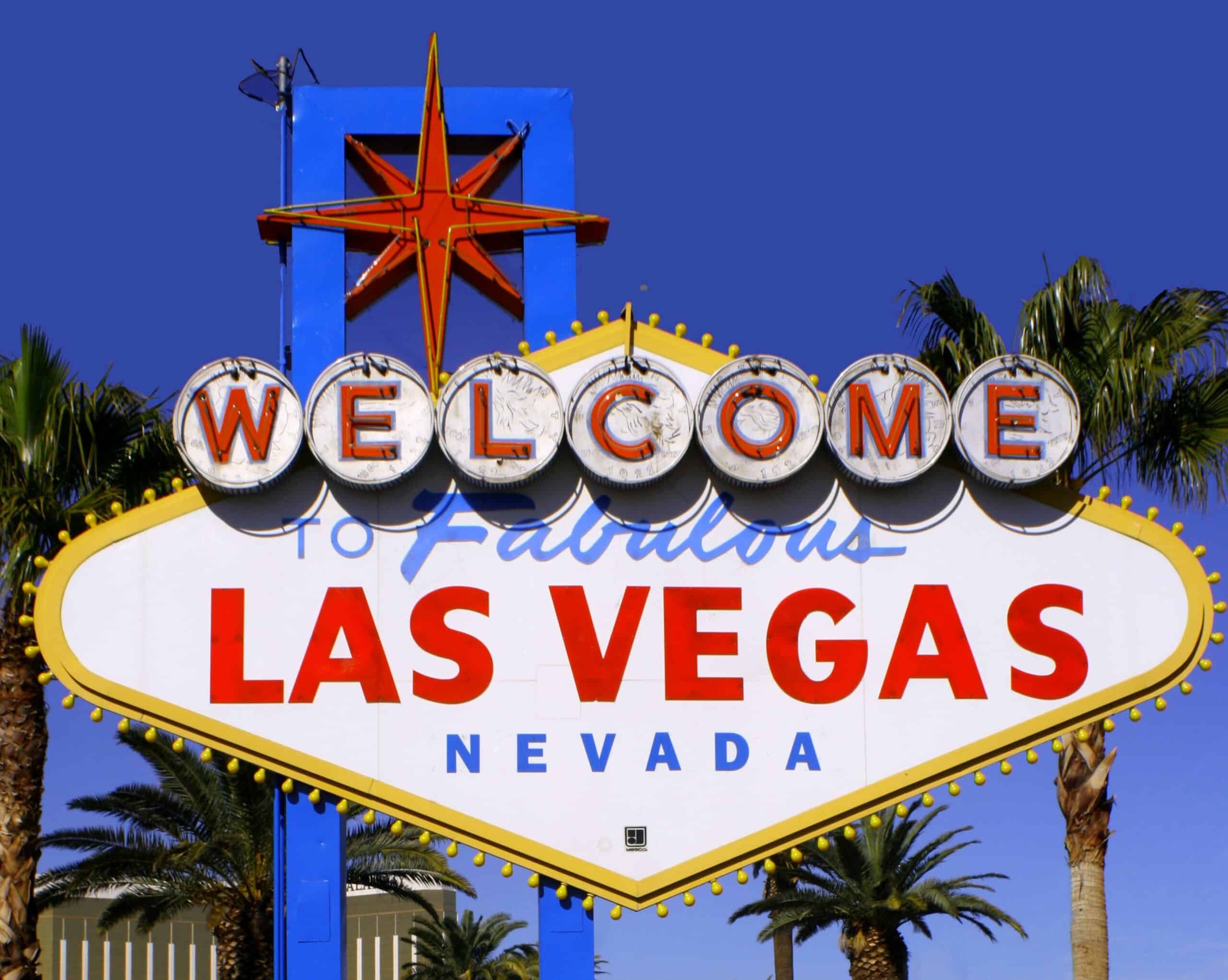When you think about Las Vegas, chances are high that the city’s flashy neon strip with its world-famous resorts and casinos automatically come to mind. Sure, this energetic city happens to be one of the most iconic entertainment capitals in the United States, but it’s much more than a tourist destination — it’s also a desirable spot to call home. No wonder why people are moving to Las Vegas faster than you can shout, “Jackpot!” In fact, it’s currently number-two on the list of top 10 U.S. cities attracting new residents in 2025.
There are numerous benefits to living in Las Vegas: a robust economy, no state income taxes, relatively affordable costs, and of course, unlimited entertainment options. So, if you’ve been wondering, “Is Las Vegas a good place to live?” then allow us to set the record straight.
Turns out what happens in Vegas doesn’t have to stay there — our guide explores all you need to know about this unique desert oasis, from the cost of living in Las Vegas and the current job market, to the best places to live in Las Vegas and all the must-see attractions.

8 Things to Know About Living in Las Vegas
It’s hard to ignore the allure of Sin City’s dynamic urban pulse and vibrant neon glow — but as with any long-distance relocation, there’s a lot to consider when moving to Las Vegas. Can you afford to purchase a home? Will the climate suit you? What are the available job opportunities? How safe is Vegas? Let’s dive into these questions (and more) below, so you can determine if Las Vegas makes the most sense for your new chapter.
1) The cost of living in Las Vegas is cheaper than other major cities
The sheer influx of people moving to Las Vegas in recent years has caused an increase in pricing for housing, utility, and other expenses. But with that said, the cost of living in Las Vegas is still one percent lower than the national average. In fact, it’s considerably cheaper than other large metropolitan areas due to factors like a diverse local economy that’s sustained through frequent tourism and no state income taxes.
A family of four will need to earn an annual salary of $239,366 to afford all their basic expenses and live comfortably in Las Vegas. Compare that to a family of four in San Francisco, New York, or Denver, who will need to earn $339,123, $318,406, and $272,314, respectively, in order to maintain that same quality of life. So, if you’re from one of these more expensive cities, moving to Las Vegas is a smart decision for your bank account.
2) Life in Las Vegas means access to spectacular outdoor recreation
If you assume that living in Las Vegas is all about the concerts and casinos, think again. It’s also known for awe-inspiring natural views and exhilarating outdoor activities. Located in the Mojave Desert, 20 miles east of the Spring Mountains, Las Vegas is the ancestral home of the Paiute Tribe, whose name loosely translates to “Desert People.”
Nature enthusiasts thrive here, thanks to these spectacular offerings:
- Explore the various hiking trails, climbing routes, and biking paths in the 195,819-acre Red Rock Canyon National Conservation Area.
- Kayak along the Colorado River in the Lake Mead National Recreation Area and see landmarks such as the Emerald Cave or Hoover Dam.
- Check out the colorful sandstone rock formations, petrified trees, ancient petroglyphs, and unique wildlife in the Valley of Fire State Park.
- Discover bighorn sheep in their natural habitat at the Desert National Wildlife Refuge, nestled between the Mojave and Great Basin Deserts.
- Hike to the summit of Mt. Charleston, the highest peak in the Spring Mountains at 11,916 feet—and the eighth tallest mountain in Nevada.
- Look for more than 270 species of both native and migratory birds in the lush 80-acre wetlands of the Henderson Bird Viewing Preserve.
- Plan a downhill skiing or snowboarding excursion in the mountains of Lee Canyon, an 11,289-foot peak in the Humboldt-Toiyabe National Forest.
3) Brace yourself for Las Vegas’s intense climate and weather patterns
Las Vegas is a desert climate with 294 days of sunshine and about 4–5 inches of rainfall per year. Temperatures can climb to over 100 degrees in the summer, then drop below freezing in the winter. Due to its arid climate, this city also experiences frequent droughts, which could increase the overall risk of wildfires in years to come. So, if you plan on moving to Las Vegas, take these potential weather extremes into account.

4) The annual crime rate in Las Vegas is above the national average
An estimated 3,552 crimes are reported in Las Vegas per 100,000 residents each year, versus the national average of 2,281 crimes per 100,000 residents. The violent crime rate is 29 percent above the national average, and the property crime rate is 61 percent higher.
So, is Vegas safe? It’s important to remember that most crimes are concentrated in small pockets of the city. The three safest neighborhoods in metro Las Vegas are Summerlin, Tule Springs, and Sovana, while the three neighborhoods with the steepest crime rates are Buffalo, Rancho Charleston, and West Las Vegas.
5) Finding a home in Las Vegas is not as expensive as you might think
As of 2025, the cost of a single-family home in Las Vegas is $426,132. That’s a 5.2% increase from last year — but it’s still more affordable than many other cities Out West, including San Francisco, Denver, Seattle, Los Angeles, and Salt Lake City.
Despite this increase in median home values, real estate inventory is also on the rise, so folks moving to Las Vegas will have numerous options to choose from. But if you’d’ prefer to rent before purchasing a house, the average cost of a one-bedroom is $1,478 per month. Of course, this will fluctuate based on the particular area. For instance, if you live close to The Strip or in a historic district like Beverly Green and Crestwood, your rent will be $1,130 –$1,150 per month, whereas pricier neighborhoods like Summerlin cost around $1,615.
6) Las Vegas has a diverse job market full of exciting opportunities
Whether you’re relocating for a job, or you want to explore a new industry, the Las Vegas job market is a hub for tourism, entertainment, hospitality, manufacturing, food service, healthcare, construction, and technology. While the current unemployment rate of 5.9 percent is above the national average, there are many open roles available, which bodes well if you’re moving to Las Vegas without a job currently lined up.
The median annual salary is $72,561 ($35 per hour)—more than you’ll earn in other Western cities such as Denver, Phoenix, and Salt Lake City. This earning potential, combined with no state income taxes, further enhances the appeal of living in Las Vegas.

7) The best places to live in Las Vegas offer something for everyone
There are over 40 neighborhoods in metro Las Vegas, each with their own distinct charm and unique selling points. This city can be a fantastic place to live, no matter where you choose to settle—it’s all just a matter of preference. For instance, do you want a suburban community to raise children, an urban center to soak up the nightlife, or somewhere in between? Here are three of the best places to live in Las Vegas to help narrow down your search.
Summerlin: A safe and peaceful enclave with family-oriented amenities
Arguably the safest area in Las Vegas, Summerlin is known for its secure gated communities, picturesque tree-lined streets, and some of the highest rated public schools in Nevada.
Families can enjoy over 200 miles of nature trails, an extensive park system, and thrilling adventures at Red Rock Canyon, less than a 10-minute drive from Summerlin. This neighborhood offers a ton of seasonal festivals as well, including the Las Vegas Farmers Market, Paiute Spring Festival, and Summerlin Festival of Arts.
You’ll also find houses in a variety of price brackets—from cozy duplexes and modest single-family homes to upscale estates.
Downtown: A walkable urban mecca that’s ideal for young professionals
Downtown Las Vegas is the perfect spot for singles who prefer an urban lifestyle with walkable access to galleries, music venues, rooftop bars, and nightlife hotspots like Commonwealth. This dynamic, exuberant neighborhood just five minutes from the Arts District and Fremont Street is always buzzing with world-class entertainment.
The area also features a variety of cultural attractions, such as the Smith Center for Performing Arts and the First Friday Art Walk. Young professionals will thrive in Downtown as well, due to its close proximity to the central business hub with co-working spaces and tech startups. In terms of housing, choose from industrial lofts, sleek condos, or high-rise apartments.
Beverly Green: A historic gem where city vibes meet mid-century charm
Dating back to the 1950s, Beverly Green is one of the more historic parts of Las Vegas with a balance of cool urban energy and quaint timeless character. The neighborhood is known for its mid-century ranch homes, featuring clerestory windows, flat roofs, geometric architecture, and lush mature landscaping.
Residents can walk to the Arts District and peruse local vintage boutiques, coffee shops, or indie performance venues such as the Majestic Repertory Theatre. It’s only 10 minutes from The Strip’s five-star restaurants and immersive entertainment, but the tranquil ambiance of Beverly Green feels like a world away.
8) You’ll find attractions and entertainment galore all over Las Vegas
We talked about the numerous outdoor attractions that await you in Las Vegas, but that only begins to scratch the surface of all the unmatched entertainment here. In a city known for its bold spirit and continual momentum, there’s no shortage of fun activities to enjoy—here are some ideas to put on your Las Vegas bucket list.
Immerse yourself in the acrobatic marvels of Cirque du Soleil.
Take a gondola ride on the Grand Canal at The Venetian Resort.
Explore the history of Las Vegas at the Mob Museum and Neon Museum.
Interact with marine life at the Shark Reef Aquarium in Mandalay Bay.
Float above the breathtaking Mojave Desert in a hot air balloon.
Sample the diverse global cuisine at Las Vegas’ most iconic restaurants.
Enjoy the food trucks and free live concerts on Fremont Street.
Root for the Golden Knights NHL hockey team at T-Mobile Stadium.
Check out all the interactive artscape exhibits at Meow Wolf.

Top Reasons to Consider Moving to Las Vegas (or Not)
As you can see, there are many considerations to think about when determining if a move to Las Vegas makes sense for you. There’s no denying all the benefits this city has to offer—but it also comes with a few potential drawbacks, just like any other new destination.
Here are the main pros and cons of living in Las Vegas to factor into your decision.
Pros of Living in Las Vegas
The cost of living is cheaper than other large metro areas.
Home values and apartment rentals are reasonable.
You’ll never run out of entertainment or outdoor recreation.
The economy is strong with a diverse job market.
Your earning potential is more than it could be in other cities.
Cons of Living in Las Vegas
Crime rates are higher than in other parts of the country.
The climate and weather patterns can be extreme.
Unemployment is above the national average.
Start Your Las Vegas Adventure with Colonial Van Lines
If you love the idea of phenomenal entertainment and a relatively affordable cost of living, and hot, arid temperatures don’t bother you, then moving to Las Vegas should be at the top of your to-do list. When it’s time to make the leap, let Colonial Van Lines help.
With over 50 years of experience in long-distance relocation, our team of highly trained experts can handle all the logistics for a seamless transition to this desert oasis. Contact us for a free moving quote today!

